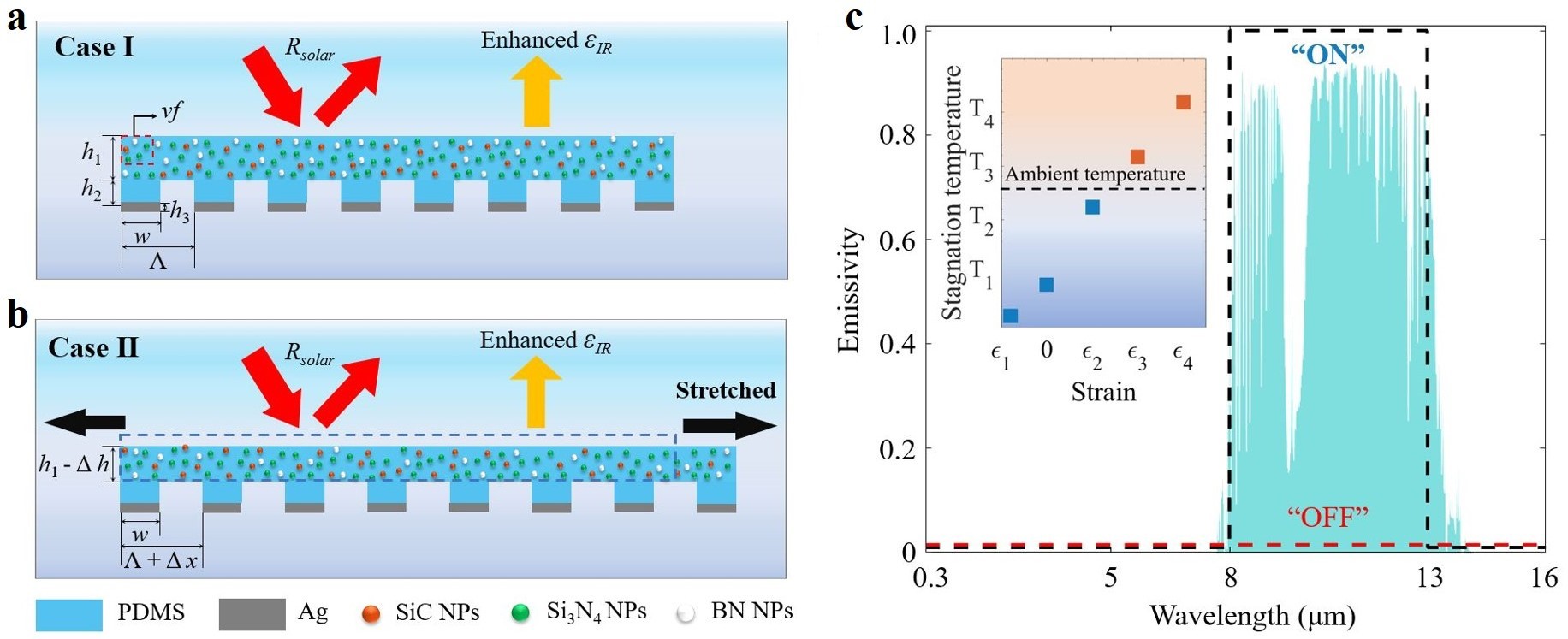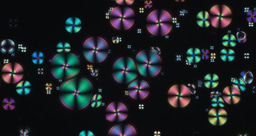Continuously Variable Emission for Mechanical Deformation Induced Radiative Cooling
Published in Electrical & Electronic Engineering

The concept of this work arose from a well-known technology of "Continuously Variable Transmission" in the automotive industry. The question here is "How can people tune thermal emittance in a similar manner?" The authors were genuinely intrigued by a similar context and then developed this novel technology of "Continuously Variable Emission."
The growing demand for thermal comfort boosts the increase in the consumption of various energy sources for cooling and heating and exerts enormous stress on electricity systems over the world. Nearly 20% of the total electricity is used by air conditioners or electric fans to regulate the temperature of buildings to be comfortable. Coincidently, the peak wavelength (∼ 9.7 µm) of blackbody radiation for objects on Earth (∼ 300 K) coincides with the atmospheric highly transparent window (8 µm ∼ 13 µm) that scarcely absorbs infrared thermal radiation. Therefore, terrestrial objects can naturally radiate thermal energy to the outer space (∼ 3 K) through the atmospheric window and hence lower their temperature, which is called passive radiative cooling.
In the past years, Prof. Yi Zheng’s Nano Energy Laboratory at Northeastern University has studied effective passive daytime radiative cooling materials such as spectrally selective metalized polymer thin film and cellulose fiber-based-composites that exhibit high reflectance in the solar wavelengths and high emittance over the atmospheric transparent window. These materials provide us alternatives for applications of radiative cooling, temperature regulation without energy consumption, and sustainable cooling throughout the day. They can be used for static radiative cooling systems that can effectively save energy in summer; however, the cooling functionality will increase the energy consumption for heating in winter.
To overcome this difficulty, Prof. Zheng’s group conceptively proposes a reconfigurable nanophotonic structure for mechanical deformation induced radiative cooling basing on the continuously variable emission in the atmospheric window to attain diverse desired stagnation temperatures. The proposed reconfigurable nanophotonic structure consists of one layer of polydimethylsiloxane (PDMS) thin film embedded with three species of nanoparticles: silicon carbide (SiC), silicon nitride (Si3N4), and boron nitride (BN), and a one-dimensional rectangular grating of PDMS coated with silver (Ag) thin film beneath the top PDMS layer. Different strains of the nanophotonic structure yield various stagnation temperatures. The dynamic tuning of the precisely-controlled mechanical deformation will result in fluctuational temperature control of the nanophotonic structure around a set temperature. This elastic material based nanophotonic structure sheds light on the dynamic regulations of thermal emission.

Figure: Thermal regulation mechanism of the reconfigurable photonic structure. a, Case I: the structure has high solar reflectivity Rsolar that reflects most of the solar irradiance and has high emissivity εIR in the atmospheric window that can radiate heat out to the outer space when it is released. b, Case II: it keeps unchanged high solar reflectivity Rsolar, while the emissivity εIR is reduced since the PDMS layer gets elongated and thinner and the period of the one- dimensional PDMS layer is increased due to the stretching, but the width of the Ag grating structure does not change. c, Schematic showing the concept of mechanical deformation induced “ON”/ “OFF” mode radiative cooling. The blue shading area displays the infrared atmospheric transparent window. The inset shows different stagnation temperatures under various strains of the nanophotonic structure.
For more information please check out our article “Continuously variable emission for mechanical deformation induced radiative cooling” published in Communications Materials, 1, 95 (2020).
Follow the Topic
-
Communications Materials

A selective open access journal from Nature Portfolio publishing high-quality research, reviews and commentary in all areas of materials science.
Related Collections
With Collections, you can get published faster and increase your visibility.
Advanced characterizations of high-entropy materials
Publishing Model: Open Access
Deadline: Dec 31, 2025
Multifunctional hydrogels
Publishing Model: Open Access
Deadline: Feb 28, 2026




Please sign in or register for FREE
If you are a registered user on Research Communities by Springer Nature, please sign in